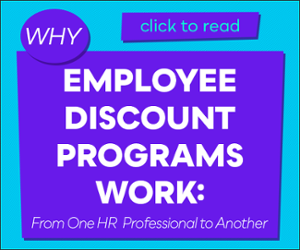I was chatting with a friend who was recently recruited to a hot tech company. He was pumped to leave the medium-sized business he had devoted several years to in exchange for one of those offices with open floor plans and on-site meditation rooms.
In truth, it was those unique employee benefits that brought him there. The company offered free lunches, an on-site gym, one of those complicated espresso machines, a very relaxed dress code, and an "all you can eat" vacation policy.
His job was the same, but everything around him was going to be so much awesomer.
Lipstick on a Pig
Flash forward six months, and my friend is miserable. The hours he’s expected to put in are insane and the pressure to perform is intense. Everything is designed to keep him at the office for hours on end.
 Infinite vacation looks great on paper, but it's meaningless if employees can never actually escape for longer than a night's sleep.
Infinite vacation looks great on paper, but it's meaningless if employees can never actually escape for longer than a night's sleep.
It's a classic case of a company using benefits to overcompensate for a high-pressure environment and slavedriver philosophy. They invested in some cool employee perks, then made it next to impossible for employees to cash in.
Usage Matters
Part of the problem with some employee benefits is the more they’re used, the more they cost. Vacation policies, tuition reimbursement, on-site meals and breakroom benefits are all examples of benefits that many businesses are reluctant to encourage. Either the associated hard costs aren’t justified, or they incur soft costs around productivity that management frets about.
Even health benefits are a double-edged sword. You basically don’t have a choice but to provide them – especially given the need to stay competitive in this excruciatingly tight labor market. But then you spend countless hours looking for ways to cut down usage in order to maintain some semblance of affordability.
Don't get me wrong – benefits are insanely important. But they only have value when they're used to the employee's benefit. (see what I did there?)
There's no sense in having a fancy espresso machine if employees are going to be berated for lingering at it too long. And employees won't use the gym if their boss stands by the treadmill staring at their watch during their entire workout.
On the flip side, when you provide creative employee perks that make their lives better, they’ll be happier and more engaged at work.
The Right Benefits Yield Employee Engagement
There’s not much that’s better for business than engaged employees. One study found that customer retention rates are 18% higher on average when employees are highly engaged. And Gallup says highly engaged business units see a 20% increase in sales.
So just how big of a role do benefits play in engagement? According to research by Metlife, employees who are very satisfied with their company’s benefits are almost four times more likely to be very satisfied with their jobs.
But to be satisfied with benefits, they’ve got to be able to use them.
Tailor Benefits Around Usability
Benefits are typically considered an extension of a company’s compensation package. So the best employee benefits will be those without limitations.
For maximum ROI, offer unique employee perks that solve everyday problems and encourage employees to use them like crazy. That way you’re not only sending your employees home with a paycheck, but you’re helping them out in other ways too. And each time they take advantage, they’ll remember who made it possible.
When weighing a benefit’s value, bigger isn’t always better. But relevant always wins. What will they use that will actually help them (and therefore help the company as well)?
Consider implementing:
- Flexible schedules
- Ability to work remotely
- Employee discount programs
- Cash incentives
- Casual dress code
- Half-day Fridays
- Breakroom snacks and drinks
- In-house music room
- Pet-friendly office policies
These are all inexpensive benefits options that pay for themselves in short order.
So go ahead and cancel the personal Yogi on retainer, and ask for a refund on the Lobster and Filet Mignon Mondays plan you may have bought in on. Go simple, and go for usage.





